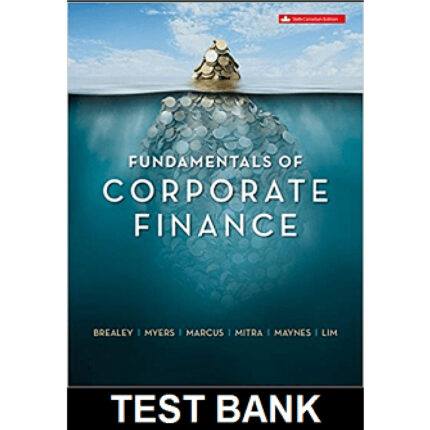Public Finance 10th Edition By Harvey Rosen – Test Bank
Multiple Choice Questions
1. A pay-as-you-go system means
A. you pay for your dinner as you go to the table to eat.
B. current working citizens pay for current retired citizens.
C. there is no need for taxes since current workers pay for current retirees.
D. retirees are paid from accounts that have accumulated with interest over their working lives.
AACSB: Reflective Thinking
Accessibility: Keyboard Navigation
Blooms: Understand
Difficulty: 2 Medium
Topic: Structure of Social Security
2. Asymmetric information generally implies
A. information between parties is not equal.
B. all parties are fully informed.
C. information is costless.
D. information is too costly to transmit.
AACSB: Reflective Thinking
Accessibility: Keyboard Navigation
Blooms: Remember
Difficulty: 1 Easy
Topic: Why Have Social Security?
3. A fully funded plan requires
A. you to pay for your dinner as you go to the table to eat.
B. current working citizens to pay for current retired citizens.
C. no taxes since current workers pay for current retirees.
D. retirees to be paid from accounts that have accumulated with interest over their working lives.
AACSB: Reflective Thinking
Accessibility: Keyboard Navigation
Blooms: Remember
Difficulty: 1 Easy
Topic: Structure of Social Security
4. An actuarially fair return means
A. returns on investments are indexed to the stock market.
B. returns on investments have to be positive.
C. benefits received, on average, would be equal to the premiums paid.
D. premiums for insurance are generally paid by the government.
AACSB: Reflective Thinking
Accessibility: Keyboard Navigation
Blooms: Remember
Difficulty: 1 Easy
Topic: Structure of Social Security
5. When workers save less during their working lives due to the fact that they have been paying Social Security taxes, this is known as
A. the Social Security effect.
B. the wealth substitution effect.
C. the bequest effect.
D. the life cycle hypothesis.
AACSB: Reflective Thinking
Accessibility: Keyboard Navigation
Blooms: Remember
Difficulty: 1 Easy
Topic: Effects of Social Security on Economic Behavior
6. Carve-out accounts
A. applies only to workers between 65 and 69 years of age.
B. take funds away from the traditional social security system.
C. has a tax rate of no more than 16.9 percent.
D. all of these answer options are correct.
AACSB: Reflective Thinking
Accessibility: Keyboard Navigation
Blooms: Remember
Difficulty: 1 Easy
Topic: Social Security Reform
7. Social Security pension benefits are
A. subject to income taxes for those with certain income levels.
B. non-taxable for all retirees.
C. subject to state, but not federal, income taxes.
D. subject to capital gains taxes.
AACSB: Reflective Thinking
Accessibility: Keyboard Navigation
Blooms: Remember
Difficulty: 1 Easy
Topic: Structure of Social Security
8. The Social Security Administration has which program(s) to administer?
A. Disability payments
B. Health benefits
C. Pensions
D. Survivors’ benefits
E. All of the answer options are correct.
AACSB: Reflective Thinking
Accessibility: Keyboard Navigation
Blooms: Understand
Difficulty: 2 Medium
Topic: Why Have Social Security?
9. In 2011, the Social Security program had costs of
A. $30 million.
B. $20 trillion.
C. $200 billion.
D. none of these answer options are correct.
AACSB: Reflective Thinking
Accessibility: Keyboard Navigation
Blooms: Remember
Difficulty: 1 Easy
Topic: Introduction
10. An earnings test as it relates to Social Security implies
A. benefits are reduced by some predetermined amount for those who have not reached normal retirement age.
B. the amount of money earned during the working life of an individual determines the amount of benefits received.
C. family earnings determine the amount of benefits received.
D. all of these answer options are correct.













Reviews
There are no reviews yet.